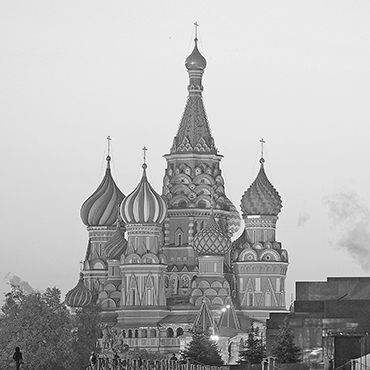SIBERIA'S SMOKE COMES EAST
Wildfire smoke from Siberia has moved into south-central Alaska and left a haze lingering over the region that could remain for weeks. About a month ago, thunderstorms stretching from the northern Siberian coast through the Kamchatka Peninsula caused multiple lightning strikes, resulting in the wildfires. Winds over the last few weeks have caused smoke from those fires to drift east into Alaska. The National Weather Service (NWS) said the smoke began spreading over Alaska in early July. Patrick Doll of the NWS's Anchorage office stated that, until the fires in Russia stop, the haze will likely continue, perhaps even through early September. Fires have burned almost nonstop in the Arctic Circle since April. NASA reported fires in Siberia and eastern Russia have released a record-breaking amount of carbon into the atmosphere as peat soils burn. (Associated Press, July 31, 2020)
BAIKAL BACKFIRE IN SIBERIA
Lake Baikal, the world's oldest and deepest freshwater lake, is again under threat of environmental destruction as a result of new Russian legislation. The lake is located in Eastern Siberia, and is known for its ecological and cultural significance to the inhabitants of the region. The new law would permit deforestation in protected areas for the next four years in order to facilitate infrastructure and transportation upgrades, while also halting required evaluations of environmental impact associated with the project. The law and its effects have the potential to knock Lake Baikal off the UNESCO World Heritage list. Last year, the construction of a Chinese bottled water plant there was blocked, but only after citizen action on the issue. (The Moscow Times, August 3, 2020)
LUKASHENKO SAYS RUSSIA LYING ABOUT MERCENARIES
Belarusian President Alexander Lukashenko accused Russia of lying about a mercenary group arrested in Belarus last week, and said another such group has infiltrated his country. "Today we heard of another unit sent into the south... We'll catch them all," he said in an address to the nation ahead of this past weekend's presidential election. Russia has denied that the 33 Russians held were plotting terrorism and were linked to anti-Lukashenko activists. Rather, it has said that the 33 - who are claimed to be members of the Wagner mercenary group - were only transiting via Belarus en route to Istanbul, and had no mission to interfere in the Belarus presidential election.
Lukashenko, however, has stressed that he does not believe this explanation. "All this about Istanbul, Venezuela, Africa and Libya - it's a lie. These people - they have already given testimony - [they] were sent into Belarus on purpose. The order was to wait... an attempt to organize a massacre in the center of Minsk is already obvious," Lukashenko said. Russia has urged Belarus to release the men, who have been named by Belarusian officials, though the Wagner connection has not been independently confirmed. (BBC, August 4, 2020)
RUSSIAN BUSINESSMAN'S SHIP LINKED TO BEIRUT EXPLOSION
Lebanese Prime Minister Hassan Diab has disclosed in a public statement that the explosion that occurred at the port of Beirut on August 4th, which killed at least 150 people and caused widespread damage to the Lebanese capital, was caused by stored ammonium nitrate. The source of ignition for the blast remains unclear. The ammonium nitrate, however, is known to have been confiscated by Lebanese authorities back in 2014 from a Moldovan ship called the Rhosus. The Rhosus is owned by Igor Grechushkin, a Russian national and resident of Cyprus. The ship had been traveling from Georgia to Mozambique in 2013 when it experienced a malfunction and made an unscheduled stop in Beirut. Soon after, Grechushkin reportedly declared bankruptcy and "abandoned" the ship there, leaving its crew stranded on the vessel for months before the ammonium nitrate could be offloaded. The ammonium nitrate had been stored in a warehouse in the port of Beirut ever since. (The Moscow Times, August 5, 2020)
ADVANCED RUSSIAN MISSILES IN LIBYA?
Defense analysts are trying to confirm whether Russia has deployed a high-end air defense system to Libya. Pictures that circulated on social media appear to show a large radar and vertical missile tubes near Ra's Lanuf in the east of the country. This could be the S-300, or the even more potent S-400 anti-missile system. The images were taken within the last few days.
If accurate, experts say, the missiles would have been deployed to protect Russia's rapidly escalating involvement in the war-torn country, and could potentially tip the scales in favor of Russia and its local allies and against Turkish-backed forces. It is also possible, however, that the photos show a decoy. Russia sometimes uses inflatable systems to confuse military intelligence. Yet even if the photos are fake, they likely point to a real system being in-country, because inflatable systems are most effectively used as decoys to protect a real system that has been deployed nearby. (Forbes, August 6, 2020)
Want these sent to your inbox?
Subscribe

